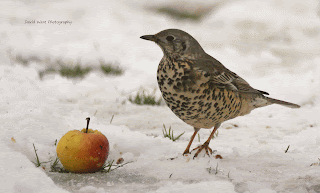For many of us with an interest in birds, there is a natural pull towards the unusual or the exotic. Some of us will travel miles to see something out of the ordinary, particularly at this time of year – those specimens that have come south or from the continent to overwinter with us; those that should have gone but have stayed over; or those that have arrived back early from their winter sojourns.
However, there is a danger of overlooking those residents that are here every day, which tend to blend into the background, but which provide the staple basis of our hobby. For many birds that share an urban or semi-urban environment with us, finding food can be quite straightforward, especially as many of us feed them. For those that live in the countryside things can be more difficult, and it is those for which I have great admiration. Some are equipped with bills for multi-use, tailored for different foods, making foraging easier when one source disappears. For others their beaks have become quite specialised, making survival a bit more touch and go.
While walking around the scrub and wooded areas of Tophill, and my attention was continually drawn to movement amongst the foliage and leaf litter, showing that birds were having to work hard to feed themselves. There were plenty of the generalist Great and Blue Tits, Blackbirds and Dunnock, but I had to work harder to find the specialists.
 |
| Bullfinch |
 |
| Song Thrush |
 |
| Goldfinch |
Given that many of these are insectivorous, it really was a question of understanding where those food sources may be found. So I started to look at areas within the woods and undergrowth where the frost was unlikely to penetrate, and which may be unlikely to completely dry out. If insects can survive, then perhaps the birds would. Sure enough, there they were.
First of all I found a couple of Wrens, then four or five Goldcrests, and finally one of my favourites, a couple of Treecreepers. I’d like to say that I was able to stand and watch those birds for ages. Unfortunately, the pressing need to find food meant that they didn’t hang about for very long.
 |
| Wren |
 |
| Treecreeper |
 |
| Goldcrest |
 |
| Great Tit |













































